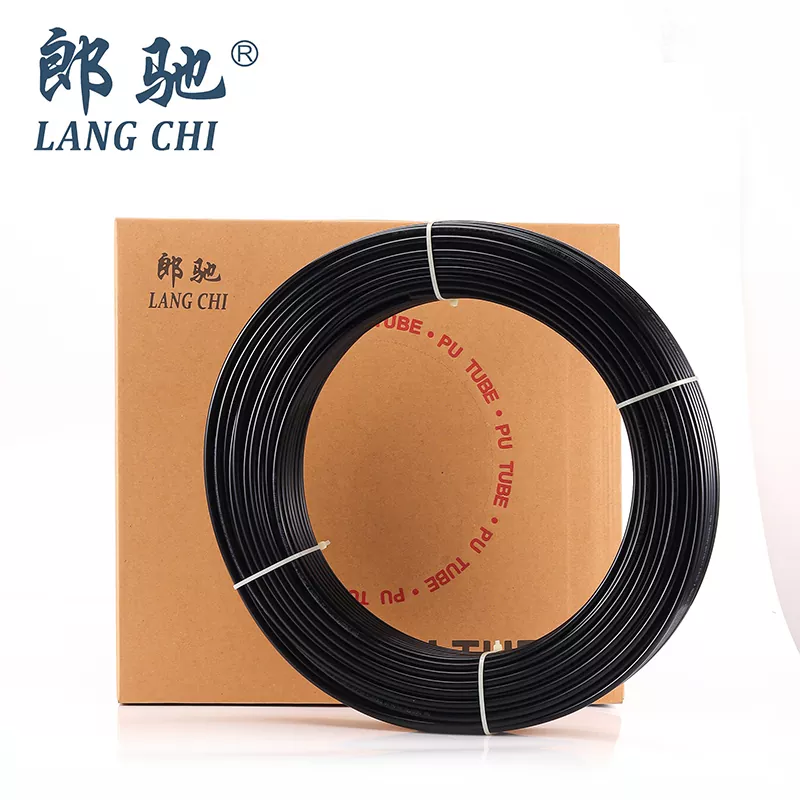Exploring the Versatility and Benefits of PU Tube (Polyurethane Tube)
2024-10-24
Polyurethane (PU) tubes have emerged as an essential component across various industries due to their unique properties and versatility. Whether it’s for air compressors, pneumatic tools, or fluid transfer systems, PU tubing has proven to be a reliable and efficient solution. This blog will delve into the benefits, applications, and unique features of PU tubes, shedding light on why they have become a popular choice in many sectors.
What is a PU Tube?

A PU tube is a flexible, durable tube made from polyurethane, a polymer known for its high resilience, flexibility, and resistance to abrasion and chemicals. Polyurethane's material properties make it a preferred choice for use in environments where durability and flexibility are crucial.
Key Benefits of PU Tubes
1. High Flexibility
PU tubes offer excellent flexibility, even in low temperatures. They can bend easily without kinking or damage, making them ideal for use in pneumatic applications where movement and flexibility are required. Unlike rigid tubes, PU tubing can adapt to tight spaces and curves without sacrificing performance.
2. Durability and Abrasion Resistance
One of the standout features of PU tubes is their resistance to wear and tear. Polyurethane is highly abrasion-resistant, outperforming materials like rubber and PVC in high-friction applications. This makes PU tubing suitable for environments where the tubing might be dragged or subject to frequent friction.
3. Chemical and Oil Resistance
PU tubes exhibit excellent resistance to many chemicals, oils, and fuels. This makes them suitable for applications in industries such as automotive, food processing, and chemical manufacturing, where exposure to corrosive substances is common.
4. Lightweight
Despite their strength and durability, PU tubes are lightweight. This is beneficial in applications where weight reduction is crucial, such as in portable pneumatic tools or systems that require ease of handling.
5. Temperature Resistance
Polyurethane tubes can operate in a wide range of temperatures, typically from -40°C to 80°C, depending on the specific formulation. This makes them versatile enough for use in both hot and cold environments.
6. Excellent Compression Set
PU tubing maintains its shape well after compression, meaning it can handle pressure without permanent deformation. This makes it ideal for pneumatic and hydraulic systems that rely on consistent tube integrity under pressure.
Applications of PU Tubes
PU tubing is used in a variety of industries due to its excellent performance in demanding environments. Some key applications include:
1. Pneumatic Systems
In pneumatic systems, PU tubes are often used to carry compressed air to tools and machinery. Their flexibility and kink resistance make them perfect for connecting different components in dynamic, moving environments.
2. Automotive Industry
PU tubes are commonly used in fuel lines, air brake systems, and other fluid transfer applications in the automotive sector. Their chemical and abrasion resistance makes them well-suited for harsh automotive environments.
3. Medical and Food Processing
Thanks to their non-toxic properties and resistance to many chemicals, PU tubes are used in medical and food processing industries for fluid transfer, pneumatic equipment, and more. The tubes can handle various fluids and gases safely and hygienically.
4. Agriculture
PU tubing is often employed in agricultural spraying systems due to its resistance to chemicals, lightweight nature, and ability to function in both high and low temperatures.
5. Robotics
In automated machinery and robotic systems, PU tubing plays a crucial role in transporting air or fluids to moving components. Its flexibility allows it to navigate through tight spaces and maintain durability under constant motion.
Comparison with Other Tubing Materials
- PU vs. PVC: Polyurethane tubing is generally more flexible, resistant to wear, and operates better in lower temperatures than PVC. However, PVC can sometimes offer a lower-cost alternative in applications where extreme flexibility is not required.
- PU vs. Rubber: PU tubes are more resistant to abrasion and chemicals compared to rubber tubing. They also offer greater flexibility and are lighter, making them a more versatile option in many industries.
- PU vs. Nylon: Nylon tubing is stiffer and has higher temperature resistance than PU, but PU offers greater flexibility and abrasion resistance, making it better suited for dynamic or high-friction environments.
Conclusion
PU tubes are an incredibly versatile and durable option for a wide range of industrial and commercial applications. Their flexibility, resistance to chemicals and abrasion, lightweight nature, and ability to perform well in various temperatures make them an ideal choice for everything from pneumatic systems to fluid transfer in harsh environments.
Whether you’re in the automotive, medical, or food processing industry, or simply need a reliable and adaptable tubing solution, PU tubes provide excellent performance and longevity. Their combination of unique properties ensures that they will continue to be a preferred choice for many applications in the years to come.


